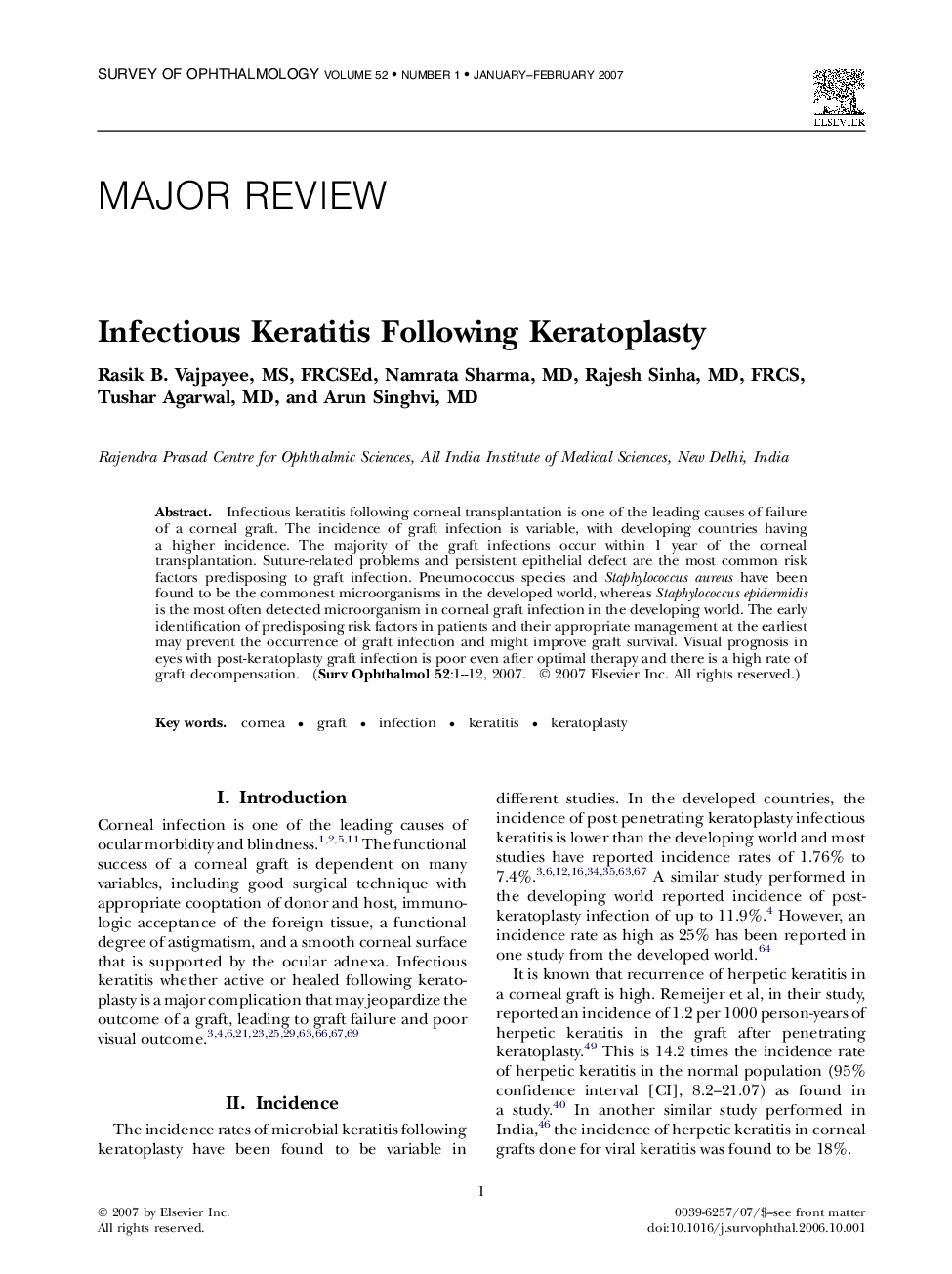| Article ID | Journal | Published Year | Pages | File Type |
|---|---|---|---|---|
| 4033169 | Survey of Ophthalmology | 2007 | 12 Pages |
Infectious keratitis following corneal transplantation is one of the leading causes of failure of a corneal graft. The incidence of graft infection is variable, with developing countries having a higher incidence. The majority of the graft infections occur within 1 year of the corneal transplantation. Suture-related problems and persistent epithelial defect are the most common risk factors predisposing to graft infection. Pneumococcus species and Staphylococcus aureus have been found to be the commonest microorganisms in the developed world, whereas Staphylococcus epidermidis is the most often detected microorganism in corneal graft infection in the developing world. The early identification of predisposing risk factors in patients and their appropriate management at the earliest may prevent the occurrence of graft infection and might improve graft survival. Visual prognosis in eyes with post-keratoplasty graft infection is poor even after optimal therapy and there is a high rate of graft decompensation.
